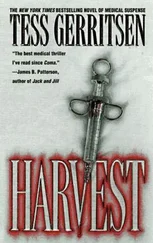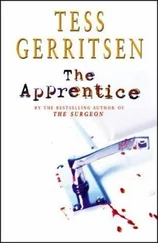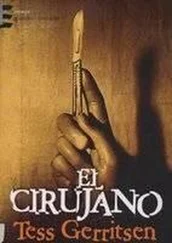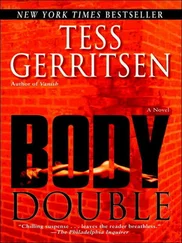Slowly I move toward her. Up till now she’s seen no reason to fear me, and why should she? I am just a woman, the same age as her mother was. But something she now sees in my eyes makes her take a step back. For the first time she understands that this could be the beginning of her worst nightmare.
“Are you afraid?” I ask her softly.
Her chin juts up, and she says with foolish bravado, “No. I’m not.”
“You should be.”
TWO
SEVEN YEARS LATER
MY NAME IS DR. MAURA ISLES, LAST NAME SPELLED I-S-L-E-S. I’m a forensic pathologist, employed by the medical examiner’s office in the Commonwealth of Massachusetts.”
“Please describe for the court your education and background, Dr. Isles,” said the Suffolk County Assistant District Attorney, Carmela Aguilar.
Maura kept her gaze on the ADA as she answered the question. It was far easier to focus on Aguilar’s neutral face than to see the glares coming from the defendant and his supporters, at least two dozen of whom had gathered in the courtroom. Aguilar did not seem to notice or care that she was arguing her case before a hostile audience, but Maura was acutely aware of it; a large segment of that audience was law enforcement officers and their friends. They were not going to like what Maura had to say.
The defendant was Boston PD Officer Wayne Brian Graff, square-jawed and broad-shouldered, the vision of an all-American hero. The room’s sympathy was with Graff, not with the victim, a man who had ended up battered and broken on Maura’s autopsy table six months ago. A man who’d been buried unmourned and unclaimed. A man who had, two hours before his death, committed the fatal sin of shooting and killing a police officer.
Maura felt all those courtroom gazes burning into her face, hot as laser points, as she recited her curriculum vitae.
“I graduated from Stanford University with a BA in Anthropology,” she said. “I received my medical degree from the University of California in San Francisco, and went on to complete a five-year pathology residency at that same institution. I am certified in both anatomical and clinical pathology. I then completed a two-year fellowship in the subspecialty of forensic pathology, at the University of California, Los Angeles.”
“And are you board certified in your field?”
“Yes, Ma’am. In both general and forensic pathology.”
“And where have you worked prior to joining the M.E.’s office here in Boston?”
“For seven years, I was a pathologist with the M.E.’s office in San Francisco. I also served as a clinical professor of pathology at the University of California. I hold medical licenses in both the states of Massachusetts and California.” It was more information than had been asked of her, and she could see Aguilar frown, because Maura had tripped up her planned sequence of questions. Maura had recited this information so many times before in court that she knew exactly what would be asked, and her responses were equally automatic. Where she’d trained, what her job required, and whether she was qualified to testify on this particular case.
Formalities completed, Aguilar finally got down to specifics. “Did you perform an autopsy on an individual named Fabian Dixon last October?”
“I did,” answered Maura. A matter-of-fact response, yet she could feel the tension instantly ratchet up in the courtroom.
“Tell us how Mr. Dixon came to be a medical examiner’s case.” Aguilar stood with her gaze fixed on Maura’s, as though to say: Ignore everyone else in the room. Just look at me and state the facts .
Maura straightened and began to speak, loudly enough for everyone in the courtroom to hear. “The decedent was a twenty-four-year-old man who was discovered unresponsive in the backseat of a Boston Police Department cruiser. This was approximately twenty minutes after his arrest. He was transported by ambulance to Massachusetts General Hospital, where he was pronounced dead on arrival in the emergency room.”
“And that made him a medical examiner’s case?”
“Yes, it did. He was subsequently transferred to our morgue.”
“Describe for the court Mr. Dixon’s appearance when you first saw him.”
It didn’t escape Maura’s attention that Aguilar referred to the dead man by name. Not as the body or the deceased . It was her way of reminding the court that the victim had an identity. A name and a face and a life.
Maura responded likewise. “Mr. Dixon was a well-nourished man, of average height and weight, who arrived at our facility clothed only in cotton briefs and socks. His other clothing had been removed earlier during resuscitation attempts in the emergency room. EKG pads were still affixed to his chest, and an intravenous catheter remained in his left arm …” She paused. Here was where things got uncomfortable. Although she avoided looking at the audience and the defendant, she could feel their eyes on her.
“And the condition of his body? Would you describe it for us?” Aguilar prodded.
“There were multiple bruises over the chest, the left flank, and the upper abdomen. Both eyes were swollen shut, and there were lacerations of the lip and scalp. Two of his teeth—the upper front incisors—were missing.”
“Objection.” The defense attorney stood. “There’s no way of knowing when he lost those teeth. They could have been missing for years.”
“One tooth showed up on X-ray. In his stomach,” said Maura.
“The witness should refrain from commenting until I’ve ruled,” the judge cut in severely. He looked at the defense attorney. “Objection overruled. Ms. Aguilar, proceed.”
The ADA nodded, her lips twitching into a smile, and she refocused on Maura. “So Mr. Dixon was badly bruised, he had lacerations, and at least one of his teeth had recently been knocked out.”
“Yes,” said Maura. “As you’ll see from the morgue photographs.”
“If it please the court, we would like to show those morgue photos now,” said Aguilar. “I should warn the audience, these are not pleasant to look at. If any visitors in the courtroom would prefer not to see them, I suggest they leave at this point.” She paused and looked around.
No one left the room.
As the first slide went up, revealing Fabian Dixon’s battered body, there were audible intakes of breath. Maura had kept her description of Dixon’s bruises understated, because she knew the photos would tell the story better than she could. Photos couldn’t be accused of taking sides or lying. And the truth staring from that image was obvious to all: Fabian Dixon had been savagely battered before being placed in the backseat of the police cruiser.
Other slides appeared as Maura described what she had found on autopsy. Multiple broken ribs. A swallowed tooth in the stomach. Aspirated blood in the lungs. And the cause of death: a splenic rupture, which had led to massive intraperitoneal hemorrhage.
“And what was the manner of Mr. Dixon’s death, Dr. Isles?” Aguilar asked.
This was the key question, the one that she dreaded answering, because of the consequences that would follow.
“Homicide,” said Maura. It was not her job to point out the guilty party. She restricted her answer to that one word, but she couldn’t help glancing at Wayne Graff. The accused police officer sat motionless, his face as unreadable as granite. For more than a decade, he had served the city of Boston with distinction. A dozen character witnesses had stepped forward to tell the court how Officer Graff had courageously come to their aid. He was a hero, they said, and Maura believed them.
But on the night of October 31, the night that Fabian Dixon murdered a police officer, Wayne Graff and his partner had transformed into angels of vengeance. They’d made the arrest, and Dixon was in their custody when he died. Subject was agitated and violent, as if under the influence of PCP or crack , they wrote in their statement. They described Dixon’s crazed resistance, his superhuman strength. It had taken both officers to wrestle the prisoner into the cruiser. Controlling him required force, but he did not seem to notice pain. During this struggle, he was making grunts and animal sounds and trying to take off his clothes, even though it was forty degrees that night . They had described, almost too perfectly, the known medical condition of excited delirium, which had killed other cocaine-addled prisoners.
Читать дальше












